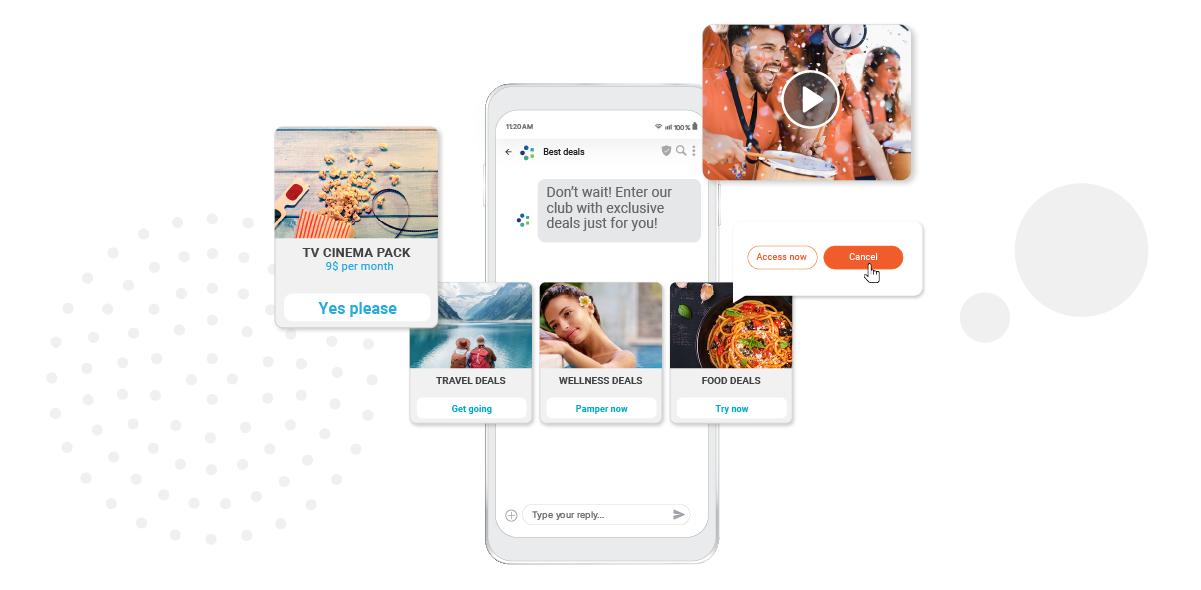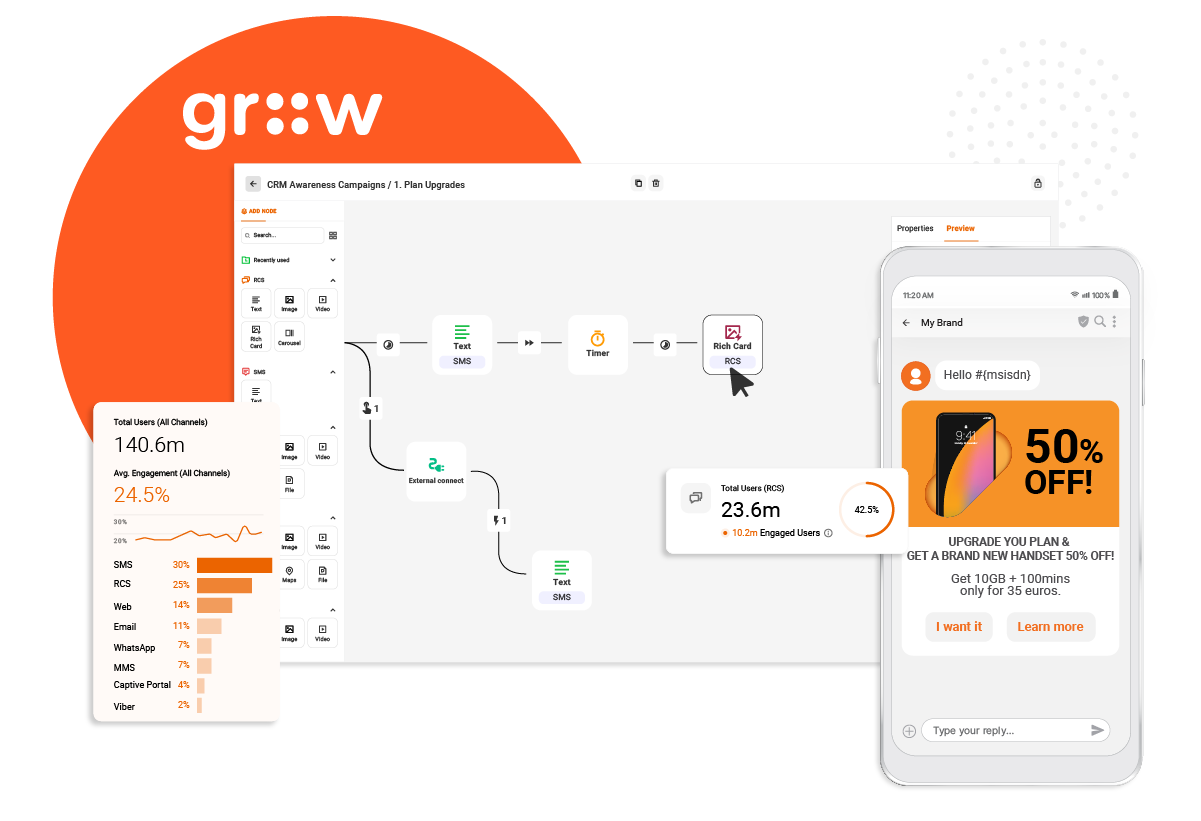Does your mobile marketing need an overhaul? Would you like an easy way to target and retarget customers, with huge reach and improved sales? Here’s everything you need to know about Rich Communication Services (RCS), a fast-growing messaging protocol that holds great potential for marketing with proven results and easy deployment.
Natively available on all compatible Android phones with supporting operators, it needs no additional installations, downloads, or registrations. What makes it particularly interesting is that it allows rich interactivity, previously only possible on over the top (OTT) messaging platforms such as WhatsApp, Viber, Telegram, and so on, including the exchange of images and videos, and the creation of groups, etc.
What is the potential of Rich Communication Services for marketers?
The most exciting aspect of RCS is its powerful potential as a channel for mobile marketing campaigns, to drive awareness, traffic, and sales. With features such as rich messages incorporating animations, carousels, links and videos, interactive calls to action, and more, in a saturated and highly competitive market, RCS can dramatically increase the effectiveness of mobile marketing campaigns. A recent campaign run by a food retailer over RCS to drive traffic to their website achieved an impressive 22.2% click-through rate, when a typical online ad scores around 2%.

Using this technology for Android phones can help companies to get their message to their target audiences quickly and with a high rate of return. RCS offers users highly engaging content, which is more likely to translate into clicks, actions, and sales.
Here are six reasons why marketers must incorporate RCS into their campaigns:
a. Huge reach: In 2022, there are an estimated 1.2 billion RCS-capable subscribers globally – predominantly in Latin America, North America, and Asia Pacific. Going forward, RCS can be expected to play a larger role in emerging markets where Android mobile phones are prevalent; they currently represent 91% of the market in South America and 84% in Africa, compared to 69% in Europe and 45% in North America . With this type of market potential, marketers ignore RCS at their peril.
b. Rich media: RCS technology gives users the ability to exchange rich content such as photos, videos, rich cards, carousels, and pop-up messaging (bubbles). It also supports a wider range of actions for consumers than other marketing channels. For instance, users can respond to messages, save events to their calendar, click to dial, or share their location – to name just a few. Multimedia communications featuring imagery, video and interactive components, which offer consumers more meaningful ways to interact and respond, are easy to roll out with RCS and are more likely to lead to conversions. An RCS campaign, launched by a mobile network operator, saw a 116% increase in migrations to higher-value plans when using a gif over a static image, and a >7% conversion rate (2x higher than SMS) through automated retargeting.
c. Proven results: Mobile network operators can increase revenues and customer loyalty, and improve monetization, with creation of richer mobile marketing campaigns. RCS has one of the highest engagement and interaction rates within omnichannel marketing. RCS campaigns perform better than those that just use OTT, email, or even SMS, because it combines the best of all three channels. A recent retargeting campaign for an MNO in Brazil led to 785k plan upgrades in six months, a 137% higher CTR for RCS over SMS, and a 37% higher conversion rate for RCS over SMS.
d. Marketers can also measure the performance of their campaigns easily, as RCS messages return useful metrics for analysis such as read receipts, meaning brands can keep track of their communications with detailed engagement tracking.
e. Identification of users: RCS is delivered via the Mobile Subscriber Integrated Services Digital Number (MSISDN), which allows mobile network operators to verify the identity of subscribers using RCS services without using third-party cookies. This is a major advantage for marketers, because third-party cookies are expected to be phased out within the next few years. MSISDN compatibility will become the most critical technology to underpin accurate and effective retargeting campaigns on mobile devices.
f. Easy deployment: RCS campaigns are easy to integrate into any multi-channel marketing strategy. Platforms such as Upstream’s Grow allow RCS to be seamlessly integrated into campaigns alongside almost any other marketing channel and can be used to build multi-channel campaigns. Their capabilities also allow marketers to access deep insights, analysis, and audience management tools, and implement conversion strategies incorporating user identification, targeting, and retargeting across different channels.

With RCS predicted to be accessible to 3.8 billion mobile users and to generate $4.6 billion in operator revenues by 2026, the question is not whether you should be using RCS for marketing, but whether you can afford not to.
For more information about how you can tap into the power of RCS to turbo-charge your marketing, check out Upstream’s white paper or contact us at global-sales@upstreamsystems.com

